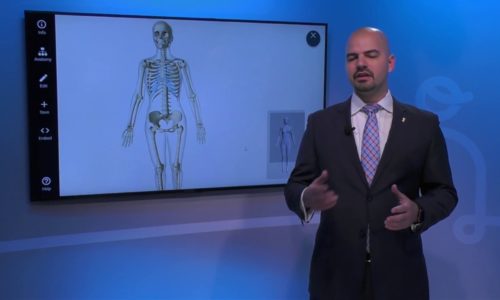Learning about Spinal Cord Stimulator |
Dr. Jose Mena, Interventional Spine Specialist with Miami Orthopedics & Sports Medicine Institute, says normally spinal cord stimulation can be put anywhere throughout the spine, but for the most part it is for lower back conditions.
“Someone who might be suffering from chronic sciatica, or chronic pinched nerve in the back, that already has surgery and they still persist with pain is one of the most common indications for spinal cord stimulation as far as we don’t have any order cause that might be causing those symptoms”, he explains. He highlights the procedure is getting a needle in place and putting wires in the spine to send electricity or signal to the spinal cord.
Transcript
We’re talking about something that’s revolutionary, we saw some information on it now go ahead and explain what we have here and give us a quick run-through. All right absolutely, so basically here we have the spine. Normally when we were talking about with spinal cord stimulation it can we can put it anywhere throughout the spine but for the most part we typically put it it for lower back conditions, so someone who might be suffering from chronic sciatica, or chronic pinched nerve in the back, that already have surgery and they still persist with pain it’s one of the most common indication for for spinal cord stimulation as far as we don’t have any order cost that might be causing those symptoms so meaning a newly developed disk coordination, another arthritis that might be pinching up on the nerve, but that’s why the scans are for to make sure and rule out that people have those things. So when we have exhausted all medical options the stimulator will be will be a reasonable procedure to do. So this procedure we do them on their x-ray guide and so normally what we do is that we place a patient facing down on an x-ray table as you were seen before on this and on the clip — it will help if I hold this maybe — absolutely you can hold my back — basically we sort a needle using direct x-ray visualization so we get a needle in place we have one of this wires that we put in the in the spine normally we put most of time we put two so if you can see they have some metals in here that those are the metals that they send electricity or signal to the spinal cord. So essentially once we put a needle we drive this this wire underneath this in the spine okay and we take it to a specific area where we want to target or stimulated the spinal cord so then what it does is just send signals down this to the spinal cord so I wait the spinal cord sends the signal to the brain. So at that point is blocking what we call the pain signal the brain doesn’t perceive the pain and instead of where the symptoms are in the leg people are gonna feel either bossing sensation or a tingling sensation nowadays when — you say no more buzz — correct, and nowadays we have been… there’s some research that we can do stimulation without buzzing itself so people they don’t feel anything at all in their in their leg so basically we’ll be feeling like they feel like their arm if there are any pain.








